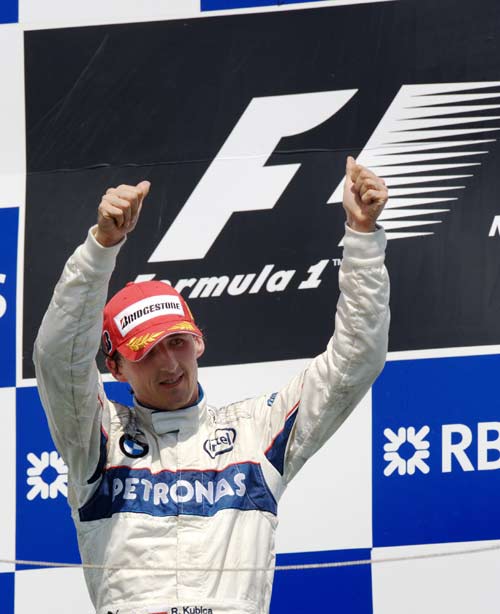F1 drivers threaten strike ahead of British Grand Prix

The threat of a possible drivers’ strike at the forthcoming British Grand Prix hung over the paddock here in Magny-Cours yesterday, as beleaguered FIA president Max Mosley once again found himself with a battle on his hands.
On past performance, though, it is another that he is likely to win.
The problem this time concerns the superlicences, for which the drivers must qualify for prior to competing in Formula One. They have to pay for them, because all of the teams regard this as a fundamental part of their racing equipment. Last year a typical superlicence cost around $2,600 for the season, with an extra cost of $700 per drivers’ world championship point scored in the previous season. Recently, however, the FIA World Council decided to change that since driver salaries, particularly among the midfield runners, had risen to around $8m. They figured they could get away with charging $15,000 for the superlicence and $3100 a point.
Thus Kimi Raikkonen, as the reigning world champion, might have to pay as much as $350,000 for his 2008 superlicence. That might be less than 10 per cent of his salary, but the majority of drivers consider this to be too much, and members of the Grand Prix Drivers’ Association are thus considering some sort of action at Silverstone.
Interestingly, Raikkonen did not seem too perturbed about the situation yesterday. “I don’t see this as any reason to strike and not to race,” he said. “I don’t think it’s the right way to go about it.
“A compromise? I don’t know… It’s never gonna happen that we all go on strike, so hopefully some nice solution will be found at some point.”
Canadian GP winner Robert Kubica agreed with fellow outspoken GPDA member Fernando Alonso. “I think that I agree with what Fernando has said,” the Pole declared. “It seems like the cost of the superlicence has gone up eight times what it was last year, so, yeah… It’s quite a lot of money, especially if you are scoring like Lewis did last year in his first year of F1. Some experienced drivers maybe don’t care because they no longer had a quick enough car, so it would be difficult for all of the drivers to have the same idea, but we are trying to convince the FIA to reduce the cost.”
Hamilton, who is not a member of the GPDA, said: “I have always said that they have my support. This is something I agree with as well, so…”
Historically, drivers are rarely united. There was an agreement in Japan in 1976 to stop after two laps in monsoon conditions. Only Emerson Fittipaldi and Niki Lauda did so; James Hunt continued, and went on to snatch the title from Lauda as a result.
The last time the drivers actually struck over superlicence issues was in South Africa in 1982, when attempts were made by Mosley and Bernie Ecclestone to tie the licences to teams, effectively trying to create a transfer system similar to that in football. Led by Lauda, Gilles Villeneuve and Didier Pironi, the drivers barricaded themselves in a hotel and refused to run until the issue had been resolved. The transfer system proposal was dropped. However, Mosley is all too aware that striking drivers are unlikely to create a sympathetic body among disgruntled fans, especially given their levels of remuneration.
A spokesman for the FIA said yesterday: “On June 6 Max wrote to all of the drivers to confirm that he is quite happy to meet them and to discuss the issue. He has not, as yet, had a reply from any of them.”
Join our commenting forum
Join thought-provoking conversations, follow other Independent readers and see their replies
Comments